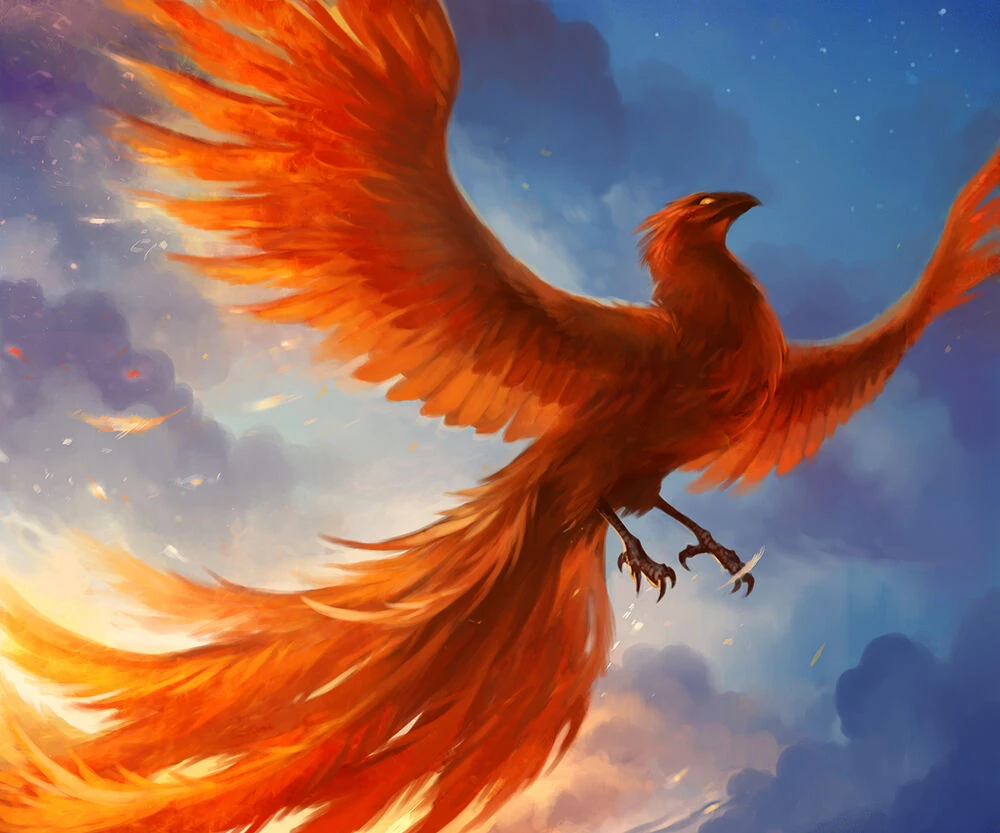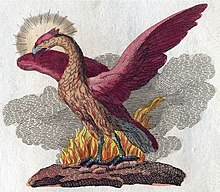Phoenix – the auspicious bird rising from the ashes

Phoenix or Amarpakshi or Mayapanchi is an ancient mythical firebird found in Arabian, Iranian, Greek, Roman, Egyptian, Chinese, and Indian myths and legends.
Appearance
The Phoenix is a very colorful bird with a golden or purple tail (green or blue according to some legends). Its life cycle is 500 to 1000 years, at the end of which it burns itself by making a nest of sticks and twigs around itself.
Both the nest and the bird burn to ashes, and from these ashes a new phoenix or its egg is reborn. This newly born phoenix has the same life span as the old phoenix. According to some legends, the new phoenix places the ashes of its old form in an egg in the Egyptian city of Heliopolis (Greek for “City of the Sun”).

Chirp is magical
It is said that the chirp of this bird is like a melodious song. The phoenix is believed to be immortal because of its ability to be reborn from its ashes, although some stories suggest that the new phoenix is the child of the old one. According to some ancient stories, they can transform into humans.
It is also a lucky charm
It is considered auspicious to have birds in the house. But if there is a picture of a Phoenix bird in the house then it is considered even better. The Phoenix bird represents the energy that brings success, fame, and growth. The picture or statue of this bird should be kept in the southern part of the house. According to Vastu Shastra, doing this makes it easy to get out of the difficulties coming in the way of success. Phoenix is a very colorful bird. Whose discussion is found in ancient myths and legends? It is believed that even after death, he rises again from the ashes.
Early reference
It is interesting to note that early references to their mythology can be found in Arabic poetry as well as in Greco-Roman culture and even much of the historical heritage of the East. In China, for example, the phoenix or feng huang not only symbolizes supreme virtue, power, or prosperity but also represents yin and yang, that duality that makes up everything in the universe.

Birth story of Phoenix
It is said that in the original Eden, under the tree of good and evil, a rosebush grew. There, next to the first rose, a bird was born with beautiful plumage and an incomparable song whose principles made it the only creature that did not want to taste the fruits of the tree. When Adam and Eve were cast out of paradise, a spark from the cherub’s sword struck the nest, and the bird was immediately burned. From the flames, a new bird emerged the phoenix, with unmatched plumage, red wings, and a golden body.
Other myths
Some legends later place him in Arabia, where he lived near a well of fresh water and bathed every day singing such a beautiful melody that the sun god stopped his car to listen to it. The myth of the phoenix bird spread widely among the Greeks, who gave it the name Phoenicopurus (meaning red feather), spreading throughout Roman Europe. Early Christians, influenced by Hellenic cults, made this unique mythical creature a living symbol of immortality and resurrection. In ancient Egyptian mythology, the phoenix represented the sun, which dies at nine o’clock and is reborn at dawn. Another symbol associated with the phoenix is that of hope, which represents a value that should never die in man.
Legends
According to Ovid, “When the phoenix sees its end coming, it makes a special nest with oak branches and fills it with cinnamon, tuberose, and myrrh on top of a palm tree. There it stands and singing the most sublime of tunes, it ends. After 3 days, from its ashes, a new phoenix emerges and when it is strong enough, it takes it to the nest in Heliopolis. in Egypt and gives it to the Sun As the new phoenix accumulates all the knowledge gained from its origins, a new cycle of inspiration begins.

Other cultures
The Phoenix bird has representations in various cultures, such as the Chinese (Fang-Huang), Japanese (Ho -oo), Russian (the Fire Bird, musically immortalized by Stravinsky), Egyptian (Bennu), Hindu (Garuda). and also present in the Toltecs (Quetzal). It was first cited in the 8th century BCE by Hesiod and later in more detail by the historian Herodotus.